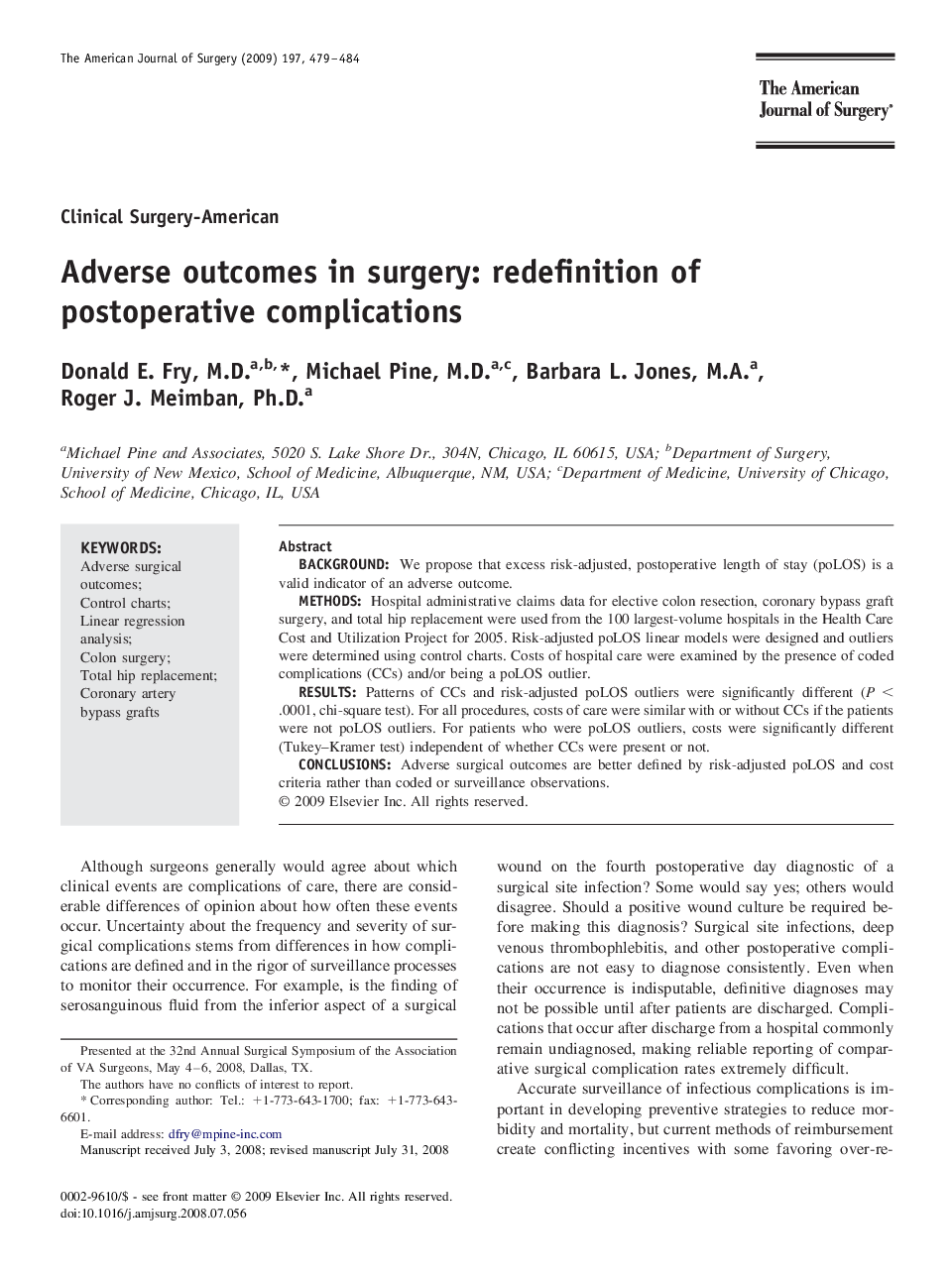| Article ID | Journal | Published Year | Pages | File Type |
|---|---|---|---|---|
| 4280819 | The American Journal of Surgery | 2009 | 6 Pages |
BackgroundWe propose that excess risk-adjusted, postoperative length of stay (poLOS) is a valid indicator of an adverse outcome.MethodsHospital administrative claims data for elective colon resection, coronary bypass graft surgery, and total hip replacement were used from the 100 largest-volume hospitals in the Health Care Cost and Utilization Project for 2005. Risk-adjusted poLOS linear models were designed and outliers were determined using control charts. Costs of hospital care were examined by the presence of coded complications (CCs) and/or being a poLOS outlier.ResultsPatterns of CCs and risk-adjusted poLOS outliers were significantly different (P < .0001, chi-square test). For all procedures, costs of care were similar with or without CCs if the patients were not poLOS outliers. For patients who were poLOS outliers, costs were significantly different (Tukey–Kramer test) independent of whether CCs were present or not.ConclusionsAdverse surgical outcomes are better defined by risk-adjusted poLOS and cost criteria rather than coded or surveillance observations.
